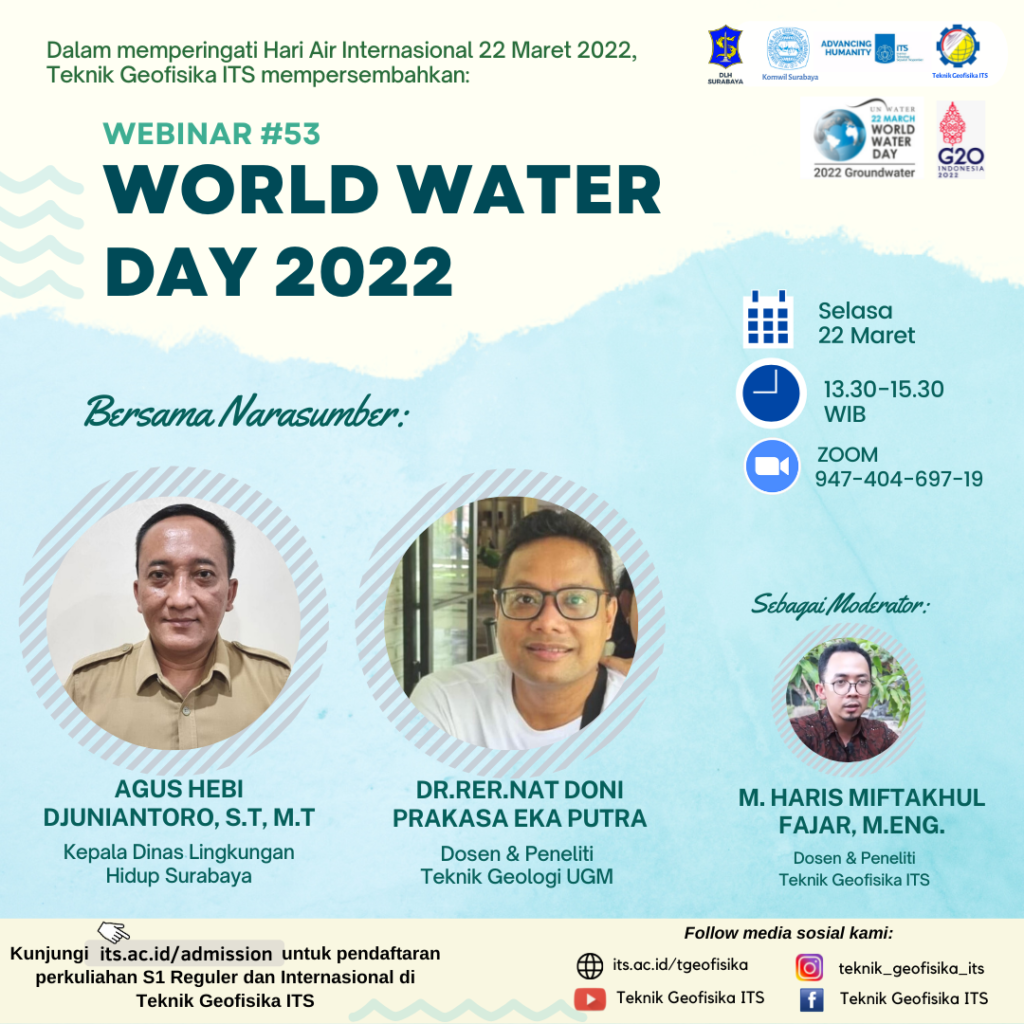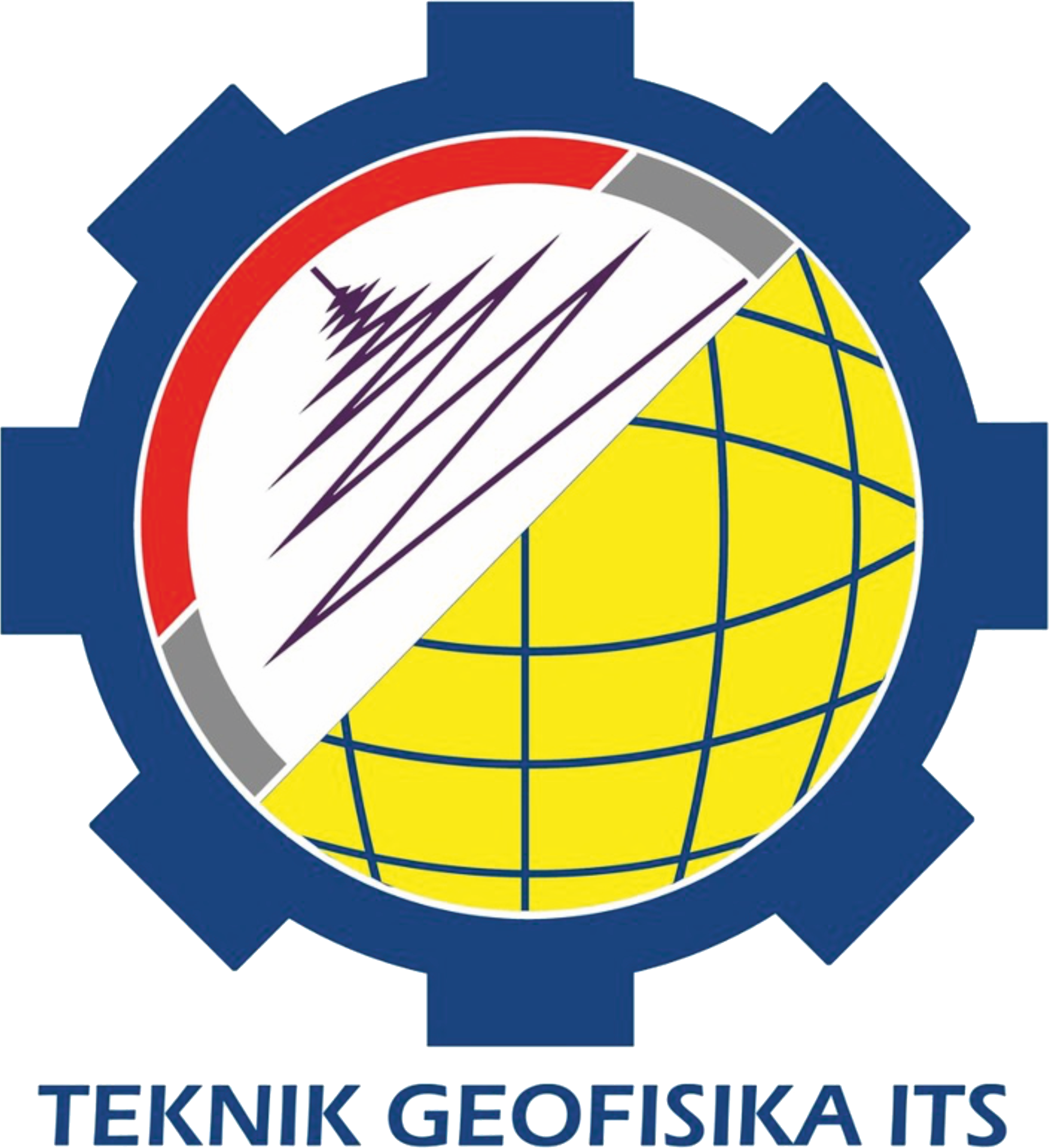Webinar #53 World Water Day
Information
Happy World Water Day March 22, 2022 SAVE GROUNDWATER
Groundwater is water found in the layers of soil or rock below the surface. There are at least 2 types of groundwater, namely shallow groundwater (well water) and deep groundwater (artesian groundwater). Groundwater is stored between grains of rock layers and between rock fractures. People are already familiar with this groundwater and for hundreds of years have used ground water or well water because it is one of the sources of clean water that is widely used by the community. The use of well water also varies, ranging from sanitation needs to daily drinking water. In the past we used ground water (well water) for our daily needs and we took part in maintaining the environment so that the quantity of well water and cleanliness was maintained. So far, people know that groundwater is a natural resource that can be renewed through the water cycle process that has been taught so far. This means that there is an area where water is absorbed and there is an area where water comes out.
Population growth will increase the need for water and industrial and technological advances require more water. Because the need is very large in a short time, the water pump technology is even more sophisticated. The need is great but is not followed by conservation efforts for groundwater catchment areas, so problems begin to arise. One of the strange problems is subsidence. Groundwater is in the pores of the rock which was originally filled with water after being extracted to become empty when water is pumped up to the surface. Between the grains under the ground compaction occurs, so that eventually the soil can sink so that buildings and infrastructure around it are damaged.
Groundwater extraction is not controlled and is not in accordance with its availability, so that it has an impact on the quality and quantity of the water source. As a result, its availability is decreasing and causing groundwater crises in several areas in Indonesia.
One example of the use of ground water by farmers to irrigate their fields was not done wisely. Many farmers use drilled wells to irrigate their fields. The use of drilled well water itself is carried out continuously even in the rainy season and 24 hours a day. This happened because the bore wells they used were not provided with a faucet to be able to regulate when the water was needed or not. And this condition is exacerbated by the absence of rules for specifications and distances between drilled wells. Even though everyone knows that to irrigate rice fields, you don’t have to use ground water because ground water is classified as class A (drinking water). The impact of groundwater extraction by farmers includes a lot of wasted water and a decrease in the groundwater level (well water) in the surrounding residential areas.
It’s different in urban areas, bottled water has really changed our perspective on well water, they can influence almost all people that bottled mineral water is the best and healthiest water. Bottled mineral water changes everything, we ignore the quantity and quality of well water, we even tend to be afraid that the well water is not clean, unhygienic and unhealthy. The government that should regulate it is also affected. The need for mineral water has become a part of life for the entire community. In fact, there are still many people who have not been served well with clean water provided by the government (PDAM) so they use well water that is not kept clean. Like groundwater in urban areas or in densely populated areas, they generally do not pay attention to the contamination of their well water, even though there are changes in color, odor and turbidity, especially during the dry season.
How is the detail? Come and join us, the ITS Geophysical Engineering Department and the Surabaya City Environment Service collaborated to organize a Webinar with the topic “World Water Day”, inviting the following speakers:
- Dr.rer.nat. Doni Prakasa Eka Putra (Lecturer of Teknik Geologi UGM)
-
Agus Hebi Djuniantoro, S.T., M.T. (Chairman of Dinas Lingkungan Hidup Surabaya)
which will be held on:
- Day/Date: Tuesday, 22 March 2022
- Time: 13.30-15.30 WIB
- Zoom: its.id/GeoLectures
Come join us and grab the e-certificate!
The presentation of speakers could be accessed through the following link:
- Dr.rer.nat. Doni Prakasa Eka Putra (Dosen Teknik Geologi UGM)
-
Agus Hebi Djuniantoro, S.T., M.T. (Kepala Dinas Lingkungan Hidup Surabaya)

Latest News
-
Beradaptasi dengan Sesar Aktif Penyebab Gempa Darat, Belajar dari Gempa Myanmar
1. Belajar dari Gempa Myanmar Jumat, 28 Maret 2025, pukul 13:20:56 WIB wilayah Mandalay, Myanmar, diguncang gempabumi tektonik. Gempa
-
Kembangkan Deep Nueral Network dan IOT Dalam Carbon Capture Storage, Mahasiswa Teknik Geofisika ITS Sabet Juara 2
Dua Mahasiswa Teknik Geofisika ITS berhasil menjuarai kompetisi nasional INCEPTION 2025. Dimas Xavier Saivascello (5017241010) dan Luvin Diart Lazertino
-
Mahasiswa Teknik Geofisika ITS Sabet Juara 1 Petrowell Study Case Competition
Tiga Mahasiswa Teknik Geofisika ITS berhasil menjuarai kompetisi nasional di bidang Oil & Gas. Tim mahasiswa yang terdiri E.T.A.





